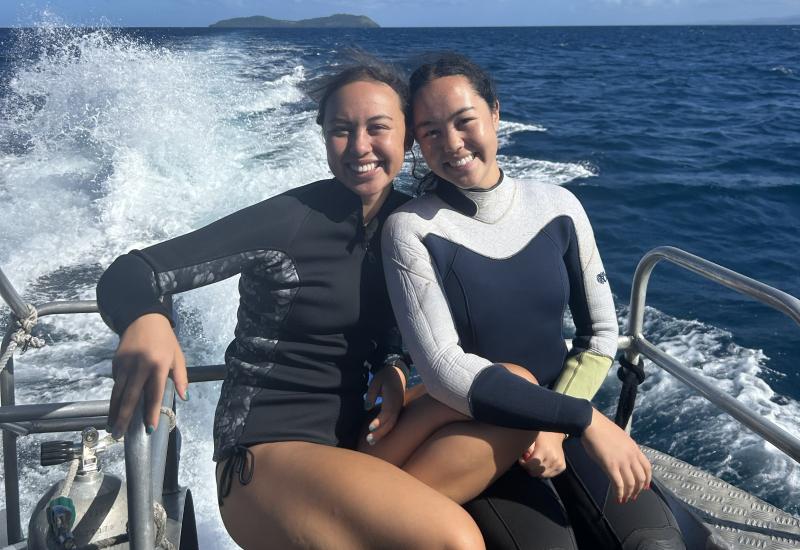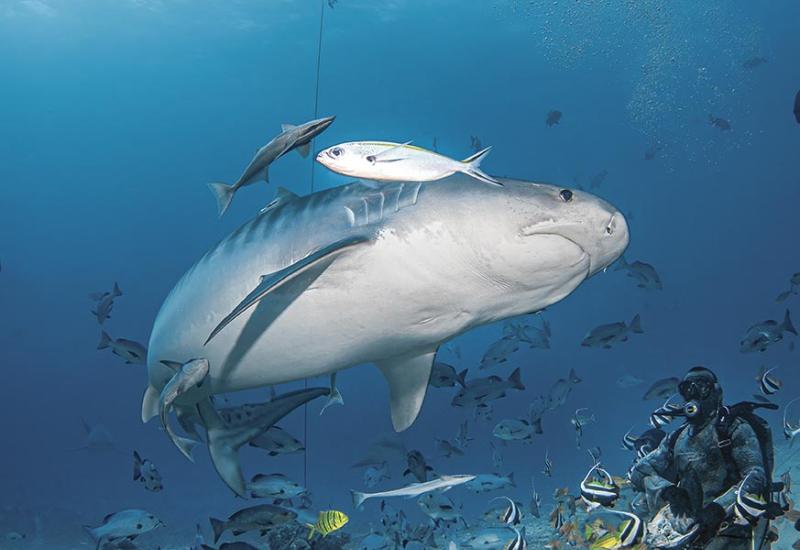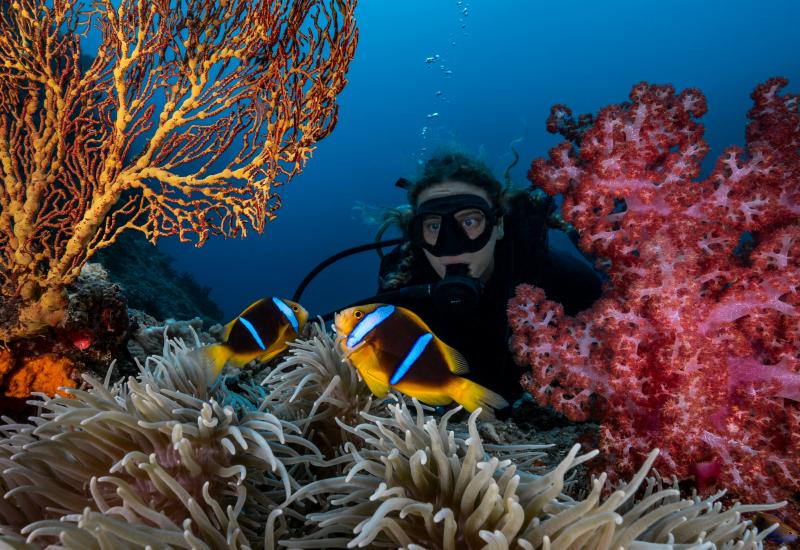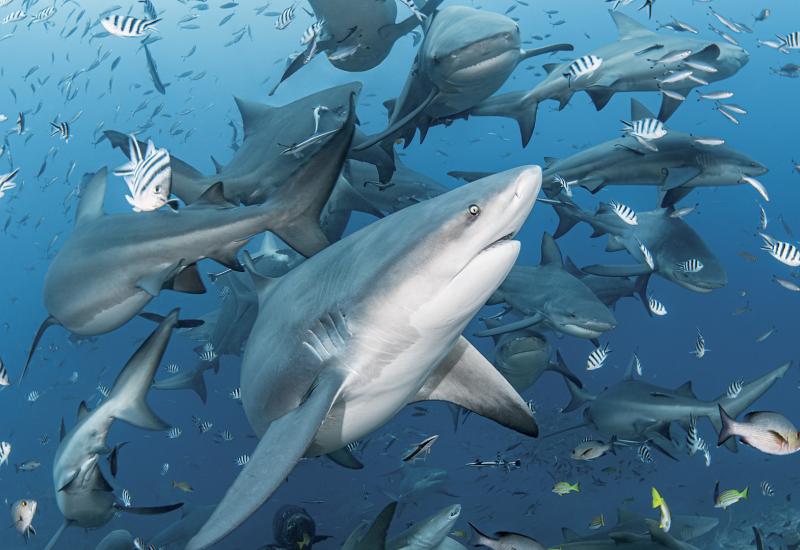Top Dive Sites of Gau Island, Fiji
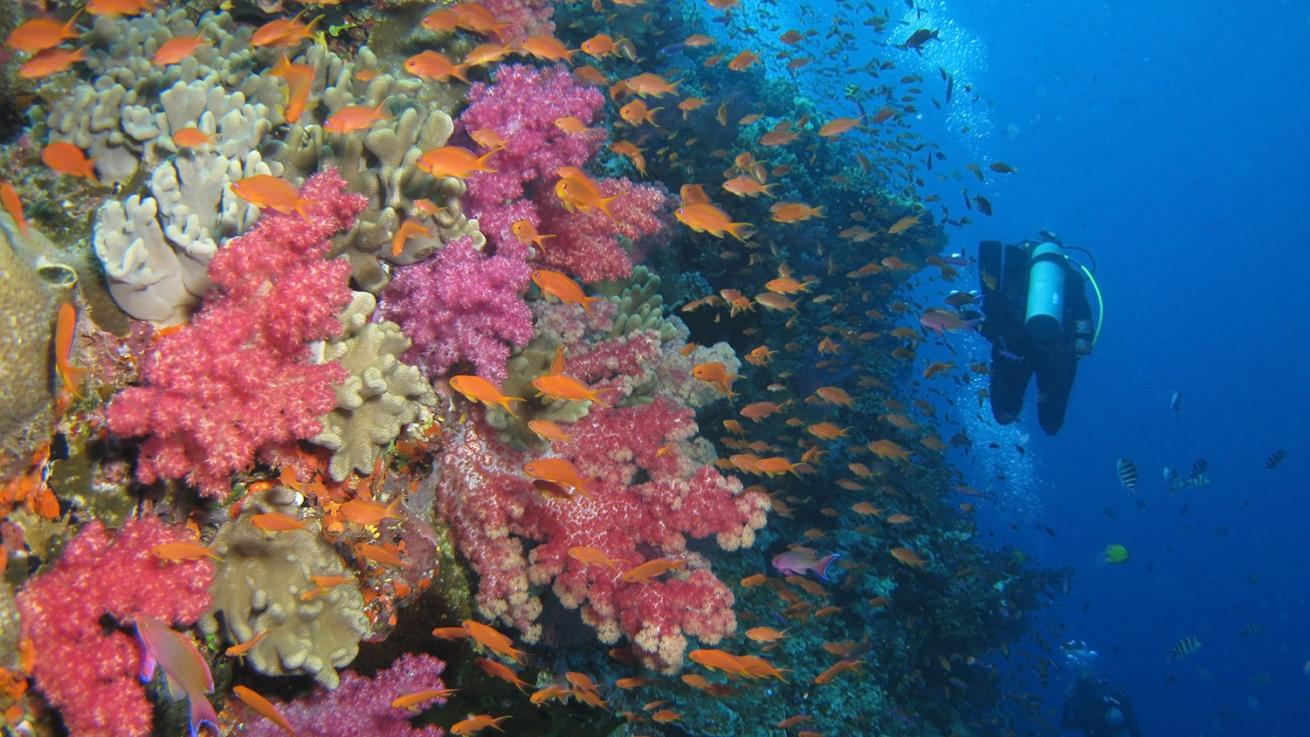
ShutterstockThe beautiful soft corals of Fiji.
Fiji is a tropical paradise with fantastic diving, and is known as one of the friendliest countries in the world. There are a variety of great dive locations around the islands of Fiji, with Gau Island offering some of the best dive sites, especially for those looking to dive with sharks.
Gau Island, also called the Amazon of the Seas, has incredible biodiversity and is the fifth largest island in the Fijian archipelago, lying 90 kilometers east of Viti Levu. This special island has a fringing reef on its north and east coasts, with a barrier reef off the west and south coasts creating a large lagoon. Gau Island is usually visited as part of a multi-stop Fiji diving itinerary and is not to be missed.
BEST DIVES SITES OF GAU ISLAND
There is an abundance of marine life to discover at Gau Island and a variety of dive sites to explore in the locality.
Koro Gardens
Diving at Koro Gardens is spectacular, with hard corals seemingly everywhere and an abundance of reef fish. This dive site has a single large bommie that comes to within 4.5 meters (15 feet) of the surface. The waters surrounding the bommie vary from 14 to 29 meters depth (46 to 95 feet).
Shark Fin Point
Lying off the north east of Koro Island, this is a great drift dive when the tide is running. Divers can see large schools of around 500 barracuda, plus eagle rays, whitetip sharks, grey reef sharks, lobsters and eels. There is plenty of fish life and the reef itself is covered in colourful hard and soft corals.
Jim’s Alley
This soft coral garden consists of three bommies in shallow water with a huge diversity of life. There are numerous hard and soft corals, sea fans, whips, anemones and fish species. There is also a group of manta rays who regularly visit the dive site and plenty of macro life for keen photographers.
Nigali Passage
This is a well-known dive site near Gau Island and understandably so, for the sheer volume of pelagic life and fast currents. The Nigali Passage is a beautiful and exciting dive with just a 3-hour window for diving, outside of which the current exceeds 4 knots and the visibility is low.
Divers drop into the swift current and ride it through the passage, which is around 20 meters (66 feet) long and resembles a sandy road. The steep walls of the passage are covered in hard and soft corals and the water is full of barracuda and reef sharks. There is a coral ledge within the passage for spotting more sharks and other marine life, before letting go and flowing with the current into the lagoon. Once in the lagoon, there is a large area of cabbage corals to explore before the dive ends.
Nigali Passage is a great drift dive and most of the dive is spent in the channel watching the action around and below divers. There are three types of barracuda to spot, schools of jack fish, snappers, groupers, jew fish, sea snakes, and occasional eagle rays and manta rays. The biggest draw is of course the chance to see sharks; including numerous whitetip reef sharks and grey reef sharks, plus occasional hammerhead sharks.
EXPERIENCE LEVEL NEEDED FOR FIJI
The favourable conditions at Fiji make this a destination suitable for all dive experience levels. The M/V Fiji Aggressor doesn’t require a minimum number of logged dives to join their safaris and visits Gau Island plus other Fiji dive highlights.
BEST TIME TO DIVE IN FIJI
It is possible to dive Fiji all year, though September is a particularly good month to visit. It is the tail end of winter in Fiji during September and the humidity and heat are comfortable. The water is cooler, though rarely dropping below 24 ºC (75 ºF), which results in phenomenal water visibility. You can expect visibility of around 30 metres (100 feet) dive after dive during winter, and the cooler air temperatures mean you won’t be sweating in the hot tropical sun during your surface intervals.
This article was written by divers and writers at LiveAboard.com.

